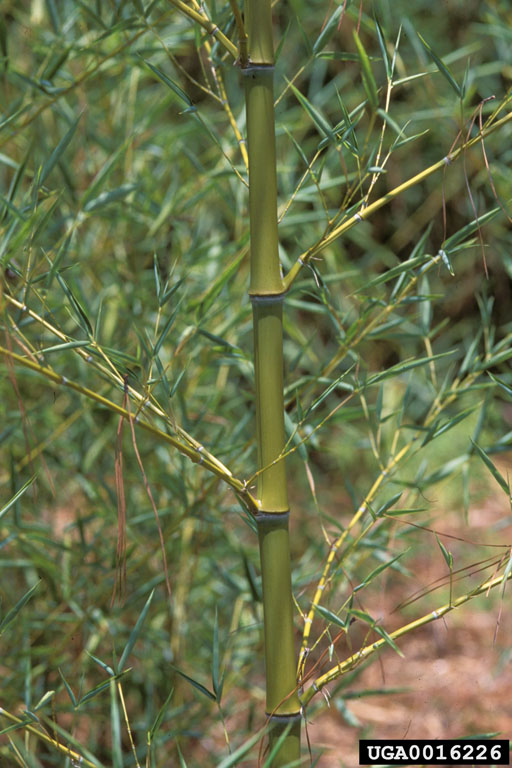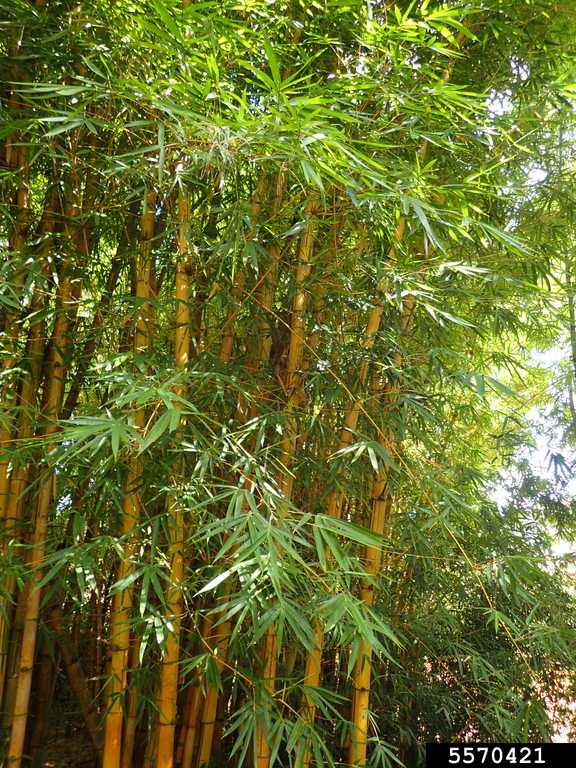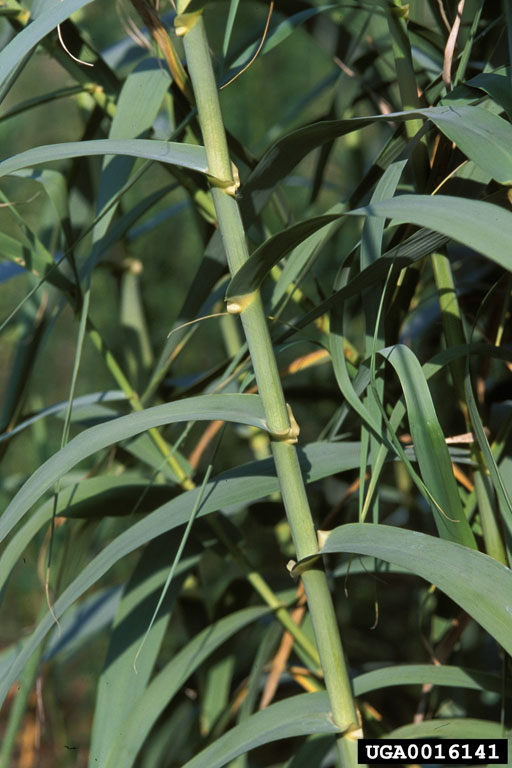 Growing Bamboo - February 27, 2019 Jeff Schalau, Agent, Agriculture & Natural Resources University of Arizona Cooperative Extension, Yavapai County Bamboo is a long-lived, woody-stemmed perennial grass that is usually evergreen if grown in a climate to which it is adapted. The term bamboo refers to plants of the large subfamily of Bambusoideae within the family Poaceae (the grass family). Bamboos are a diverse plant group ranging from those that grow only a few inches in height with to giants that can attain over 100 feet with trunk-like stems. Some are cold tolerant (USDA Hardiness Zone 5) while others are frost sensitive. Worldwide, there are approximately 45 genera and over 1,200 bamboo species. They most common in southeast Asia, China and Japan. Asian bamboo is harvested for food, paper and timber. In the United States, bamboo is usually grown as an ornamental. There are three reasons that I like bamboo. First, it creates a visual appeal that is cool, shady, and tropical. Second, in the slightest breeze, it has a soothing rustling sound – leaves are brushing and canes are clacking – it has a peaceful white noise that adds to the visual appeal. Third, the canes can be thinned out and trimmed up to create useful garden stakes and trellis poles. There are also a few reasons to be wary of bamboo which will be covered below. Bamboo species are characterized as either “clumping” or “running”. All bamboos spread by underground stems called rhizomes. Clumping types have much shorter rhizomes causing them to spread much more slowly. Running types produce long, vigorous rhizomes that can invade adjacent areas, especially where soil moisture is available. Clumping bamboos are easier to manage in the landscape. Running types should be contained using a root barrier constructed of either concrete or thick polyethylene material designed for that use. Root barriers should be at least 30 inches deep. Routine maintenance and inspection of root barriers for escaped running bamboo is highly recommended. Running bamboos often find their way past the barrier material and into adjacent lawns and other regularly irrigated areas. Bamboos come in a range of heights, leaf sizes, stem diameters, and stem colors. In the Verde Valley area, we are limited to cold hardy bamboo species. Several bamboo species can withstand winter temperatures of -10° and lower. Many of these are running types, but panda bamboo (Fargesia spp.) is a genus of clumping bamboos from the Himalayas that can tolerate -25 degrees F. References suggest these should be planted where they will receive 4-5 hours of morning sun and some afternoon shade. Bamboos adapted to temperate regions like the Verde Valley grow a complete set of new leaves each spring, the old ones falling away as the new ones develop. This can be viewed as messy, but these leaves are best left in place as mulch. Bamboo is a forest plant and the natural mulch of dead leaves helps keep the soil moist and recycles nutrients. They can be gathered and composted if a more formal look is desired. In terms of water use, bamboo does require some irrigation to establish, but it can tolerate much less frequent irrigation once established. `Bamboo only flowers every 50-100 years or more, so it usually propagated by division. Plants can be harvested from established bamboo stands using the proper tools, but it can be labor intensive. It is best to transplant bamboo in the warm season. For running bamboos, use a sharpened shovel and a pair of hand pruners, dig and separate a clump that has white roots, a green top, and several joints on the rhizomes. Keep the root ball moist and replant as soon as possible. Clumping bamboos are probably best for most homeowners because they are not invasive. The most locally appropriate (north central Arizona) clumping species are the genus Fargesia. Running bamboos should be planted in large containers or with root barriers to control their spread. See references below for more information. A bamboo lookalike, the undesirable giant reed (Arundo donax), is common around the Verde Valley and has become invasive along the Verde River and its tributaries. Do not transplant or encourage this plant. I have included photos and additional bamboo resources below. Follow the Backyard Gardener on Twitter – use the link on the BYG website. If you have other gardening questions, call the Master Gardener help line in the Camp Verde office at 928-554-8992 or e-mail us at verdevalleymg@gmail.com and be sure to include your name, address and phone number. Find past Backyard Gardener columns or provide feedback at the Backyard Gardener web site: http://cals.arizona.edu/yavapai/anr/hort/byg/. Photos  Golden bamboo, (Phyllostachys aurea, James R. Allison, Georgia Department of Natural Resources, Bugwood.org).
Golden bamboo, (Phyllostachys aurea, James R. Allison, Georgia Department of Natural Resources, Bugwood.org). Common bamboo (Bambusa vulgaris, Whitney Cranshaw, Colorado State University, Bugwood.org).
Common bamboo (Bambusa vulgaris, Whitney Cranshaw, Colorado State University, Bugwood.org). Giant reed (Arundo donax) is not a bamboo and is highly invasive along waterways and irrigated areas (James H. Miller, USDA Forest Service, Bugwood.org).
Giant reed (Arundo donax) is not a bamboo and is highly invasive along waterways and irrigated areas (James H. Miller, USDA Forest Service, Bugwood.org).Resources American Bamboo Society www.bamboo.org/ The Bamboo Garden: Techniques for maintaining and root pruning bamboo www.bamboogarden.com/barrier%20installation.htm Bamboo Control University of California Integrated Pest Management ucanr.edu/blogs/blogcore/postdetail.cfm?postnum=10577 |